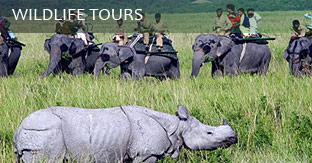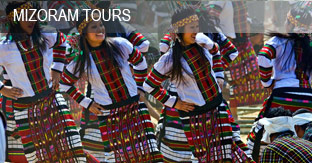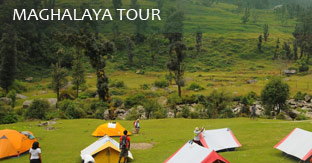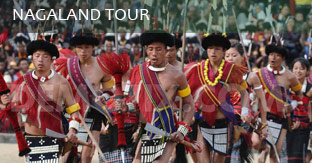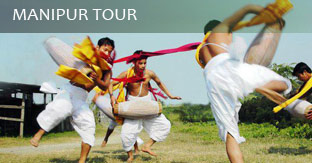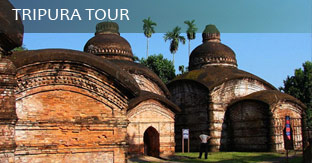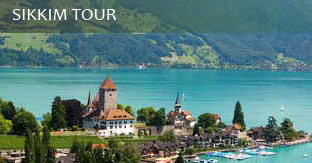Located on the easternmost Himalayas Arunachal is one of the most sparsely populated states of India. It borders Tibet, China, Bhutan and Myanmar. Arunachal is home to more than 60 aboriginal tribal groups and sub-groups. There are five major rivers – Kameng, Subansiri, Siang, Lohit and Tirap, which go on to form one of the biggest river systems in the world, the mighty Brahmaputra. The snow peaked mountain ranges of Arunachal is home to some of the tallest peaks of the world. The most famous being Gorichen, Kangto and Takpa Shri.
ABOUT ARUNACHAL PRADESH
Arunachal is one of the most sparesely populated states of India, borders China, Bhutan and Myanmar. There are five major rivers – Kameng, Subansiri, Siang (later the Brahmaputra in Assam), Lohit and Tirap and the mountain ranges follow the river systems. Home to a complex mix of communities, its people are friendly, colourful and simple. Its rich flora ranges from the Alpine to the subtropical, from rhododendrons to orchids. Its verdant forests, turbulent streams, lofty mountains and snow clad peaks make it a unique place.
HOW TO GET THERE
Bomdila
Nearest airport is Tezpur (190kms) with daily flights from Calcutta. Nearest railway station is Rangapara (100kms), Well-connected by daily bus service from Tezpur.
Tawang
Nearest airport: Tezpur (345kms)
Nearest railhead: Rangapara (280kms)
Naharlagun & Itanagar
Nearest airport: Lilabari in Assam (56 kms from Naharlagun) (67 kms from Itanagar)
Naharlagun is also connected by a Helicopter service from Guwahati.
Nearest railway station:
Harmuti (23 kms from Naharlagun)
North Lakhimpur (60kms from Itanagar) in Assam.
POPULATION
Population of Arunachal Pradesh is 950,000
TRIBALS
There are 26 major tribes and a number of sub-tribes inhabiting this area. Most of these communities are ethnically similar having derived from the original common stock but geographical isolation from each other has brought amongst them certain distinctive characteristics in language, dress and customs.
Broadly, the people have been divided into three cultural groups on the basis of their socio-religious backgrounds. The Monpas and Sherdukpens of Twang and West Kemeng districts follow the lamastic tradition of Mahayana Buddhism. Noted for their religious beliefs, the villages of these communities have highly decorated ‘Gompas’ . Though largely agriculturists, many of these people are also pastoral and breed herds of Yak and mountain Sheep. Culturally similiar to them are the Membas and Khambas, who live in the high mountains along the northern borders, Khamptis and Singphos, inhabiting the eastern part of the State are Buddhists of Hinayana sect. They are said to have migrated from Thailand and Burma long ago.
The second group of people are the Adis, Akas, Apatanis, Bungnis, Nishis, Mishmis, Mijis, Thangsos etc. who worship the Sun and Moon God. Their religious rituals largely coincide with the phases of agricultural cycles. They invoke nature deities and make animal sacrifices. Adis and Apatanis extensively practice wet-rice cultivation and have a considerable agricultural economy. Apatanis are also famous for their paddy-cum-fish culture. They have specialised over centuries in harvesting two crops of fish, along with each crop of paddy.
The third group comprises Noctes and Wanchos, adjoining Nagaland in the Tirap district. These are hardy people known for their structured village society in which the gereditary village chief still plays a vital role. The Noctes also practise elementary form of Vaishnavism.
FAITH & CULTURE
There are 26 major tribes and a number of sub-tribes inhabiting this area. Most of these communities are ethinically similiar having derived from the original common stock but geographical isolation from each other has brought amongest them certain distinctive chracteristics in language, dress and customs.
Broadly the people have been divided into three cultural groups on the basis of their socio-religious backgrounds. The Monpas and Sherdukpens of Twang and West Kemeng districts follow the lamastic tradition of Mahayana Buddhism. Noted for their religious beliefs, the villages of these communities have highly decorated ‘Gompas’ . Though largely agriculturist, many of these people are also pastoral and breed herds of Yak and mountain Sheep. Culturally similiar to them are the Membas and Khambas who live in the high mountains along the northern borders, Khamptis and Singphos inhabiting the eastern part of the State are Buddhists of Hinayana sect. They are said to have migrated from Thailand and Burma long ago.
The second group of people are the Adis, Akas, Apatanis, Bungnis, Nishis, Mishmis, Mijis, Thangsos etc. who worship the Sun and Moon God. Their religious rituals largely coincide with the phases of agricultural cycles. They invoke nature deities and make animal sacrifices. Adis and Apatanis extensively practice wet-rice cultivation and have a considerable agricultural economy. Apatanis are also famous for their paddy-cum-fish culture. They have specialised over centuries in harvesting two crops of fish along with each crop of paddy.
The third group comprises Noctes and Wanchos, adjoining Nagaland in the Tirap district. These are hardy people known for their structured village society in which the gereditary village chief still plays a vital role. The Noctes also practise elementary form of Vaishnavism.
FLORA & FAUNA
In Arunachal’s rich flora and fauna, orchids find a place of pride. Out of about a thousand species of orchids in India, over 500 are to be found in Arunachal alone. These are colourful, spectacular and some bear exotic names such as Sita-Pushpa and Draupadi-Pushpa, which are believed to have been worn by these Goddesses. Arunachal Pradesh Forest Development Corporation has developed an Orchid Research and Development Centre at Tippi in West Kameng district for propogation and conservation of these species. In addition to this Orchidorium at Tippi, two Orchid conservation sanctuaries have been developed at Sessa and Dirang in West Kameng district.
The Wildlife of Arunachal Pradesh is equally rich and varied. Elephants and tigers abound, especially in the grassy foothills and leopards and jungle cats are quite common. The White browed gibbon is found in Tirap and Lohit districts and red pandas and musk in the higher altitudes.
The ‘Mithun’ exists both in wild and semi-domesticated form. The animal has religious significance and has intimate relation with socio-cultural life of the people. Four wildlife sanctuaries at Pankuli, Loli, Itanagar and Namdapha had been set up in 1979, covering an area of 3000 sq. kms.
PLACES OF INTEREST
Bomdila
Dirang
Itanagar
Tawang
Tipi
Tezu
FESTIVALS IN ARUNACHAL
Festivals
ADVENTURE IN ARUNACHAL
Trakking
Rafting and Angling
Trekking and Climbing

